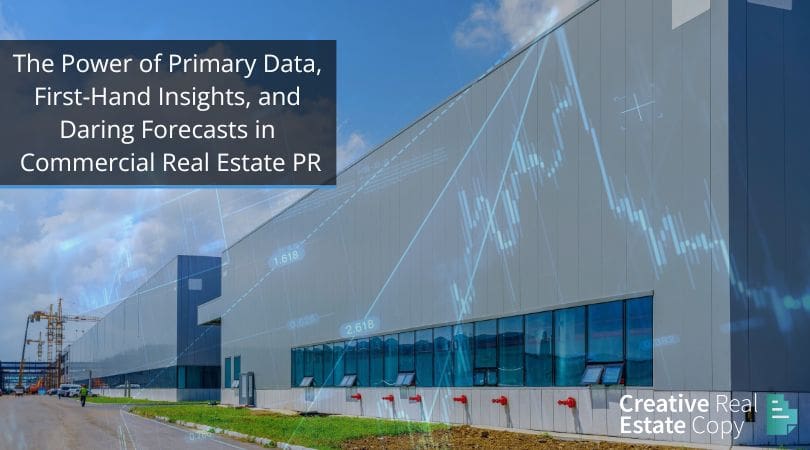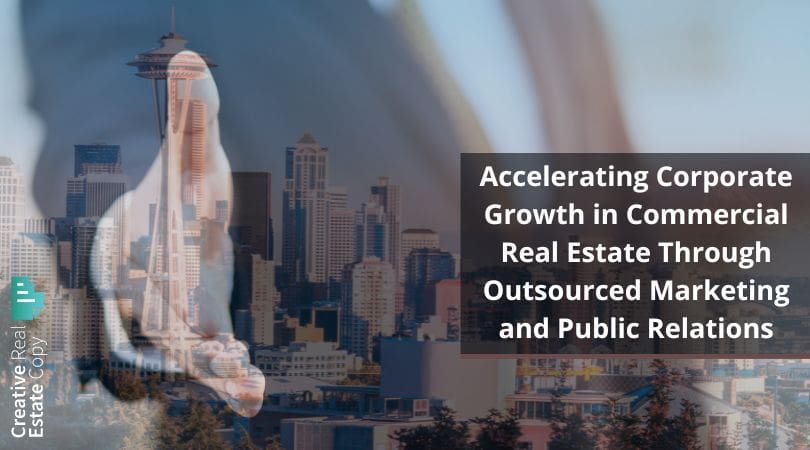Excellent writing is foundational in commercial real estate. Whether you’re trying to attract investors, secure institutional partnerships, or position your firm as an industry authority, the quality of your written communication directly influences how your audience perceives you.
Yet across the CRE industry, firms delay hiring a professional writer, assuming content can be outsourced later, handled in-house, or “cleaned up” after the fact.
From firsthand experience working with brokerages, investment managers, SaaS providers, developers, and REITs, we’ve seen this decision’s impact: disjointed messaging, inconsistent tone, ineffective campaigns, and websites that underperform because the writing came too late in the process.
Hiring a professional writer early and strategically creates alignment, saves time, and helps CRE businesses grow their visibility, credibility, and deal pipeline.
Why timing matters in CRE
Start Early for Strategic Planning
The messaging needs to be clear before the site plan, offering memorandum, and website wireframes. A professional commercial real estate industry writer clarifies your value proposition, voice, and communication goals before you build anything around them.
We’ve worked with investment platforms and development groups that initially tried to draft copy in-house, only to realize late that their brand narrative was unclear or inconsistent. With multiple stakeholders involved, alignment becomes even more complicated the longer it’s delayed.
Bringing in a writer early allows you to define key messaging and use that to guide marketing, investor decks, press releases, and more. It saves time and ensures clarity at every stage.
Build Websites Around Words, Not the Other Way Around
In CRE, your website is more than a digital brochure. It’s a credibility tool, investor portal, lead generator, and recruiting platform. The content must do more than “fill the space.”
We once worked with a boutique brokerage with a beautiful website design, but placeholder text stayed untouched for weeks. When they finally brought us in, the layout boxed them into vague, surface-level messaging that didn’t reflect their expertise or differentiators.
Rebuilding around the right message, crafted first, resulted in stronger engagement and more inbound leads. Content-first planning ensures the site supports your goals, not vice versa.
Save Time and Avoid Rework
CRE timelines are fast-moving. Launches, RFPs, investor roadshows, and marketing campaigns typically have fixed deadlines.
One capital advisory client delayed engaging a writer for a new fund rollout. Last-minute revisions, internal rewrites, and rushed design changes cost them valuable time and nearly delayed the launch.
Hiring a writer early in the process avoids wasted effort and money and ensures you hit key milestones with clear, polished, and aligned messaging.
Recognizing the right business circumstances in CRE
Scaling Your Firm or Platform
As CRE firms grow, content needs multiply. Scaling requires clear, consistent messaging across every channel, whether new service lines, expansion into new markets, or investor relations materials.
We’ve helped regional brokerages clarify their brand as they expanded nationally, ensuring every presentation, pitch, and press release reinforced a single, compelling message.
Launching a New Property, Service, or Platform
From a new mixed-use development to a PropTech SaaS launch, CRE businesses often need a clear narrative to support the launch.
One client came to us with a Class A industrial development and a tight timeline. We provided the copy for their website, teaser sheet, and social content, ensuring brokers, lenders, and investors received a message tailored to what mattered most to them.
Facing Increased Competition
CRE is a crowded space. Your competitors are investing in marketing, pushing thought leadership, and fighting for the same attention.
A commercial property management firm we supported initially had strong results but lacked visibility in a key market. Through professionally written blog content and case studies, they began attracting organic traffic, securing media mentions, and growing their client base without increasing their ad spend.
Key use cases for hiring a CRE writer
Thought Leadership
Executives in CRE have deep market knowledge, but translating that into compelling LinkedIn posts, whitepapers, or bylined articles is time-consuming and difficult. A writer conveniently shapes that expertise into content that builds credibility and attracts opportunity.
Public Relations
From award submissions to news releases about new hires, acquisitions, and closings, PR in CRE must be accurate, strategic, and professionally written. A good writer ensures your message reflects your brand and grabs attention in the proper channels.
Blog and Content Marketing
Ongoing content boosts SEO, supports recruiting, educates investors, and nurtures leads. We write for clients who want more than fluff. They want articles that speak directly to property owners, brokers, developers, and asset managers.
Email Campaigns
Email remains one of CRE’s most powerful communication tools. This includes lease-up announcements, investor updates, or quarterly insights. A seasoned commercial real estate writer ensures those messages are clear, valuable, and aligned with your goals.
Website Copy
Your website is often your audience’s first impression. Professional website copy informs and persuades. Writers craft headlines, company bios, investor messaging, and landing pages to showcase your brand in the best light.
Webinars, Case Studies, and Collateral
Professionally written case studies, one-pagers, and decks help CRE firms win listings, raise capital, and support business development. A writer transforms raw data and bullet points into strategic tools that drive action.
The value of hiring a professional writer in CRE
Industry Expertise and Adaptability
CRE isn’t like other industries: the terminology, tone, and audience expectations require a writer who understands the space. Our writers have supported clients in brokerage, development, proptech, asset management, and CRE finance; that experience shows in every project.
Return on Investment
Strong content drives results. We’ve seen well-written websites outperform ad campaigns. We’ve seen thought leadership pieces lead directly to new business. Investing in content creates lasting assets that continue to deliver value.
Peace of Mind
Our clients are busy. Writing often gets pushed down the to-do list, but deadlines still loom. A professional writer gives you time back, ensures quality, and brings confidence to every touchpoint.
Positioning your business
Hiring a professional commercial real estate writer is more than polishing words. Professionals position your CRE business to communicate more clearly, convert more confidently, and compete more effectively.
We’ve seen firsthand what happens when clients wait too long. Lost momentum, unclear messaging, and rushed campaigns are avoidable problems. We’ve also seen the transformation when a writer is brought in early: stronger brand identity, better performance, and more time to focus on what matters most.
Whether preparing for a launch, scaling your business, or building long-term visibility, now is the right time to bring in a writer who understands CRE and can deliver the content your business needs to grow.
Let’s talk about where you’re headed and how the best writing and insights can help you get there.









